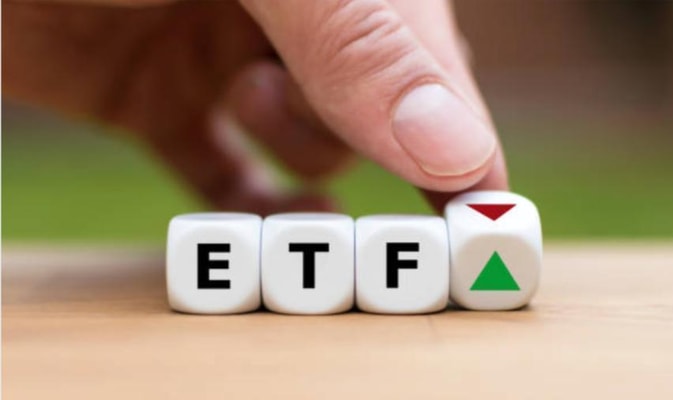The democratization of the ETF market is underway

24 APR, 2023
By RankiaPro Europe

2022 was a challenging year for the asset management industry, both in terms of performance (with average declines of 10% for global fixed-income funds, 14% for balanced funds, and 16% for global equity funds) and in terms of fund outflows, which reached a record EUR 230 billion globally. 67 billion, in line with the annual average of net inflows over the past ten years of around 70 billion euros.
The trend has continued this year: in contrast to the stagnation of actively managed funds, ETFs have recorded inflows of more than EUR 40 billion in the first three months, which would be equivalent to around EUR 160 billion per year if the current level were to continue.
What is the reason for their success? Quantalys Harvest Group's ETF Management Observatory, in partnership with BNP Paribas Asset Management, highlights several points from a European perspective:
- ETFs now offer a wider range of strategies. They have long been reserved for equity markets, but other ETF strategies, such as fixed income, are beginning to gain in popularity. In 2022, fixed-income ETFs accounted for 25% of the total ETF market in terms of value.
- ESG ETFs are increasingly popular. In 2022, net equity inflows to ESG ETFs (€44 billion) exceeded those to other ETFs (€24 billion). This trend started in 2021 and gained momentum in 2022, with ESG ETFs accounting for 65% of net inflows, up from 55% the previous year.
- ETFs capitalize on the rise of the thematic trend. In 2022, investors continued to broaden their international diversification by turning to ETFs with exposure to global markets (with inflows up 14%) and thematic ETFs (which accounted for a quarter of equity ETFs by the end of 2022).
- Increasing popularity in the area of wealth management and private investment. Once the prerogative of European institutions, ETFs are becoming more popular with retail investors through online financial intermediaries and financial apps, as indicated by the latest French market savings barometer from the AMF (French Financial Markets Authority). Quantalys Harvest Group also notes that financial advisors are increasing including ETFs in their fund selection process. In addition, ETFs have a growing presence in the French life insurance market. The number of contracts containing at least one ETF has increased by six percentage points, from 38% in 2021 to 44% in 2022. These contracts referred to an average of 31 ETFs in 2022, compared to 20 ETFs in 2021, representing an increase of 55%.
- Pressure on commissions remains high across Europe. At the end of 2022, the European Commission wanted to reintroduce a ban on retrocessions in the distribution of financial products. In the field of life insurance, commissions on unit-linked products were once again in the spotlight. Following urgent statements by the ACPR (Autorité de contrôle prudential et de résolution) and EIOPA (European Insurance and Occupational Pensions Authority), France Assureurs has asked its members to intensify the review of unit-linked accounts in their contracts with a view to moderating the level of final commissions payable by investors and to favor ETFs and UCITS funds with "clean" or retrocession-free shares.
"The 2022 Observatory illustrates the growing deployment of ETFs in wealth management and retail investment through life insurance. The growth of advised or mandated management, driven by MiFID II, and the resulting boom in ETF mandates will encourage further changes and increase the popularity of ETFs. In addition, the evolution of management practices (more tactical, more digital, more thematic, or more engaged, i.e. SRI-oriented) also favors ETFs. It is therefore essential that an independent research firm such as Quantalys helps its clients to better analyze and understand these tools, to understand their specific risks, and to anticipate future changes. This is why we have decided to open a dedicated ETF section on our platform and develop specialized ETF tools in our portfolio management modules. We have also decided to launch the ETF Management Observatory together with BNP Paribas Asset Management to provide reliable, independent, and in-depth data on the market at the European level.
Jean-Paul Raymond, Head of Research and Development at Quantalys Harvest Group.
For all these structural reasons, Quantalys Harvest Group's ETF Management Observatory, in partnership with BNP Paribas Asset Management, forecasts continued high inflows in Europe in 2023, in line with the average of previous years. Thanks to the popularity of ESG and thematic strategies, inflows are expected to exceed €100 billion this year.
"ETFs and index funds managed to hold their own in a challenging year thanks to the strength of their sustainable approaches and 2023 looks promising in terms of capital inflows. In Europe, we are growing our client base thanks to the growth drivers of private banking and wealth management. In order to help educate and provide greater transparency to investors, we have joined forces with Quantalys Harvest Group to democratize the use of ETFs among as many investors as possible.
Sol Hurtado de Mendoza, managing director of BNP Paribas Asset Management for Spain and Portugal.
Related articles
 Granolas Stocks: what they are and differences with the Magnificent 7
Granolas Stocks: what they are and differences with the Magnificent 7By RankiaPro Europe

